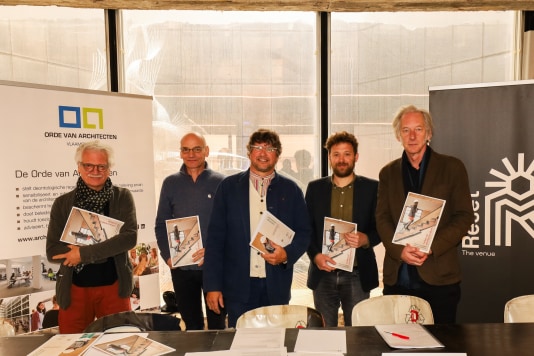Kortrijk – From better permit policy to more consumer protection: Belgian architectural organizations are calling for a joint action plan to take more decisive measures to make spatial development and existing building heritage more sustainable at a high pace. “The urgency of climate goals requires us to act united,” say the architects.
The architectural sector proposes 5 specific measures:
1. Effective consumer protection in construction
The business plan wants more protection for consumers. “Today, anyone who uses only a contractor for their project can only hold that contractor liable for any damages to the building. However, architects are required to obtain liability insurance for all phases of all projects. It is necessary to divide responsibilities more evenly, primarily to protect In addition, there is a need for a platform where consumers can check whether a contractor is registered, insured and licensed to perform their services,” says Dag Boutsen (System Architects).
2. Comprehensive reform of value-added tax rules
To achieve climate goals, everyone must make an effort and consumers must be more encouraged to renovate their homes sustainably. Belgian architectural organizations point out that current VAT rates for construction and renovation are not designed to meet social needs and therefore have a disincentive effect.
“For example, the distinction between demolition and reconstruction on the one hand and renovation on the other is a purely financial legal construction that only partially encourages circular construction. For example, the luxury finish of a renovated apartment is subject to a reduced VAT rate, while advice Architect and EPB correspondent for the renovation of a terraced house are not subject to In addition, the rules are unnecessarily complex, leading to ambiguity, gray areas and legal uncertainty,” says Stephen Llano (NAV).
Belgian engineers are therefore calling for a comprehensive reform of VAT. “Reconstruction and renovation projects should be taxed in the same way and the difference between VAT on labor (6%) and VAT on services (21%) must also be corrected.” So no more cutting and pasting. “This adds further complexity and only hampers the sustainability of our heritage.”
3. Better organization of tenders
Better regulation of tender procedures is also required. This is one of the tools through which governments can speed up construction procedures. “In most government contracts, the design is already requested during the tender stage, which means architects have to implement 15-20% of the total contract before it is awarded. If they miss it, they will incur all these costs for nothing.” This does not Not only is it time consuming and expensive, it often does not lead to the best design because there is hardly any interaction between architects and clients at that initial stage,” explains Dirk Deherde (Group of Thirty).
Therefore, tender procedures should focus not only on the design, but also on the designers. “If a design is requested, there must be a correct compensation: 80% of the costs incurred. In addition, the expected output must be limited by clarifying expectations in the tender procedures.
4. Stimulating innovation
Belgian architects are also calling for more innovation. We cannot provide the best response to challenges such as building transformation, spatial densification, core strengthening and the need to make buildings more energy efficient if we stay on the beaten path. “That is why governments should invest more in cross-sector design research and experiments, with regulations and legislation that make this possible. “As a sector, we would like to reach out to all institutions and make our knowledge and experience available to find solutions for a more sustainable and inclusive living environment,” says Olivier Bastin (FAB).
5. Better permit policy (regional efficiency)
Last but not least, the problem of slow licensing still exists. The permitting process is currently so inefficient and slow that investors doubt whether they still want to set up projects in Belgium. This must change, and architectural organizations see a key role for regional and even local authorities in this matter. “By requiring cities and municipalities to develop a clear spatial vision and creating more opportunities for densification, the growing demand for built jobs can be met with limited potential impact on space use,” says Jos Lessens (System Architects).
Final conclusion
In addition, the government can better support and mitigate local environmental services. “The ‘Initial Consultation Guide’, which contains tips on how to obtain an environmental permit more quickly, is already a step in the right direction, but it must also have the courage to amend it after a few years. We also want access to a platform Flemish real estate information, because it contains a lot of information that is relevant to us as well.”

“Lifelong entrepreneur. Total writer. Internet ninja. Analyst. Friendly music enthusiast.”











More Stories
Monster Jam Showdown Launch Trailer
The European Digital Twin Ocean prototype reveals many possibilities
Instagram now lets you add a song to your account